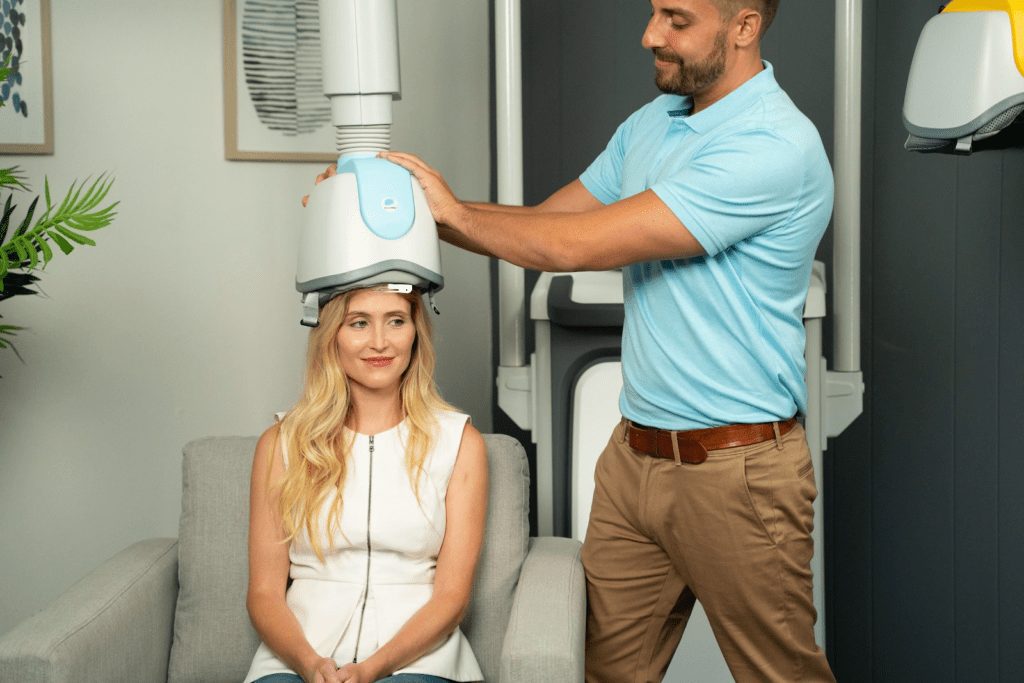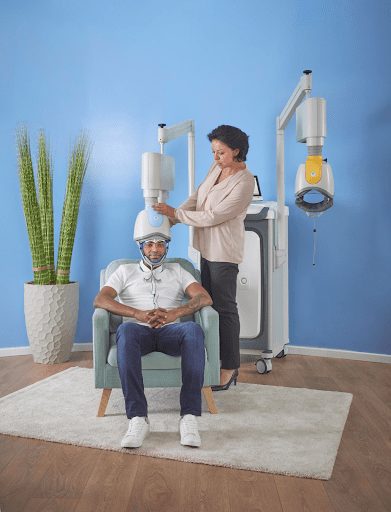Transcranial magnetic stimulation, or TMS, has been available to the general public since the 1980s. Its popularity is due to a combination of features, which have made it a sought after treatment option for a growing number of patients. With many patients of mental health and neurological conditions asking “where can I find TMS providers near me,” it can be helpful to gain a clearer understanding of the more common routes toward finding a healthcare professional and scheduling your first appointment. Read on to find out how you can do so.
Both first-generation and Deep TMS are offered by clinics around the world. But how do you find a healthcare professional offering TMS near you? While First-Generation TMS is offered by a number of companies, Deep TMS is offered exclusively by BrainsWay. To receive a list of the nearest Deep TMS providers, insert your zip code here.
When considering Deep TMS providers, is it important to remember to take into account not just the proximity to their clinic, but also the route and ease of access. It is recommended to call ahead of time to find out about parking and handicap accessibility. Learning about the different additional treatments offered at the facility and talking to a licensed professional at the center about the possibility of combining Deep TMS with other, evidence-based forms of treatment, is also encouraged. While TMS is generally compatible with other types of treatment, it is always recommended to inform the primary point of contact at the clinic of any medical issues, past procedures, and normally taken medications, to make sure Deep TMS is indeed a viable option.
Transcranial magnetic stimulation is a non-invasive treatment option that utilizes electromagnetic fields through the use of its own, unique technology. By focusing on brain structures found to play a role in the targeted mental health or neurological disorder, the electromagnetic fields activated during the TMS process are able to safely regulate their neural activity, gradually setting a normal cadence to these structures’ neural rhythm. As the TMS treatment process continues, the disorder’s symptoms begin to wane, causing a less severe disturbance to the patient’s well-being.
A TMS treatment session normally lasts around 20 minutes, during which patients will feel a tapping sensation on their head where the treatment device is currently focusing its pulses. Most patients report the treatment process to be rather tolerable, with many patients passing the time during treatment on their phones or reading a magazine. They remain fully conscious throughout the treatment and are able to converse with the TMS device operator and communicate any discomfort they might feel.

TMS has been recognized by the US FDA for its ability to offer a safe and efficacious treatment option that is non-invasive and causes minimal, fleeting side effects. So far, it has been FDA-cleared to treat major depressive disorder (MDD), obsessive-compulsive disorder (OCD), migraine headaches, and smoking addiction. It has also been CE-marked in Europe for these and a number of additional conditions, including post-traumatic stress disorder (PTSD), chronic pain, and post-stroke rehabilitation.
As opposed to medication that can cause patients significant side effects, TMS is generally considered a rather mild treatment that does not induce severe or long-lasting negative reactions from those undergoing it. Its most common side effect is a fleeting headache that normally passes after the first few sessions. For comparison, the most common side effects of the popular antidepressant family of selective serotonin reuptake inhibitors (SSRIs), whose most common side effects include weight gain and sexual dysfunction.
Due to its non-invasive treatment process and minimal side effects, TMS can be combined with other forms of treatment. As a result, TMS for depression is often combined with SSRIs treatment or psychodynamic therapy, while TMS for OCD might be combined with SSRIs or cognitive behavioral therapy (CBT). This allows patients to continue with existing treatments and to consider the TMS clinic’s other treatment options that might additionally facilitate symptom relief.
Unlike more invasive treatment options such as electroconvulsive therapy (ECT, commonly referred to as “shock therapy”), TMS does not require the use of anesthesia and does not necessitate a significant recovery period. Patients undergoing TMS treatment are able to drive to and from their treatment center while continuing with their daily routines.

There are currently two types of TMS treatment on the market: First-Generation TMS and Deep TMS. First-Generation TMS is the earlier version, and relies on a handheld, figure-8 device to send out its electromagnetic fields. As a result, targeting issues may sometimes arise with this type of TMS, requiring the use of neuronavigation equipment that helps ensure the relevant brain structures have been reached.
Deep TMS uses its own, patented H-Coil technology to utilize its electromagnetic fields. Instead of relying on a handheld device, the H-Coil is held inside a cushioned helmet that is fitted onto the patient’s head. This allows the treatment’s pulses to reach wider swaths of the brain simultaneously, thereby managing to avoid the targeting issues of its predecessor. Deep TMS is additionally able to directly regulate relevant brain structures found in deeper regions of the brain, further contributing to the treatment’s efficacy while still maintaining a safe level of activation.
Due to these advantages, Deep TMS is now covered by most US insurance providers, including Medicare and more private insurers. Single-case coverage can also be an option, and as a result, it is recommended that patients considering Deep TMS contact their insurance providers to see whether they can qualify for full or partial coverage of this treatment.